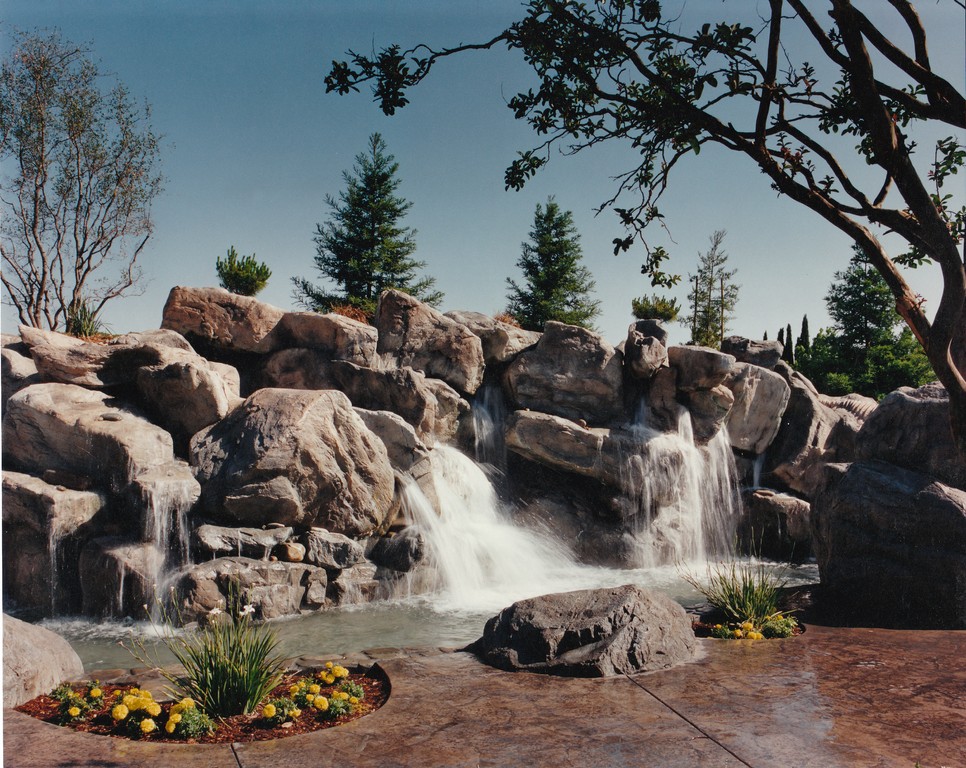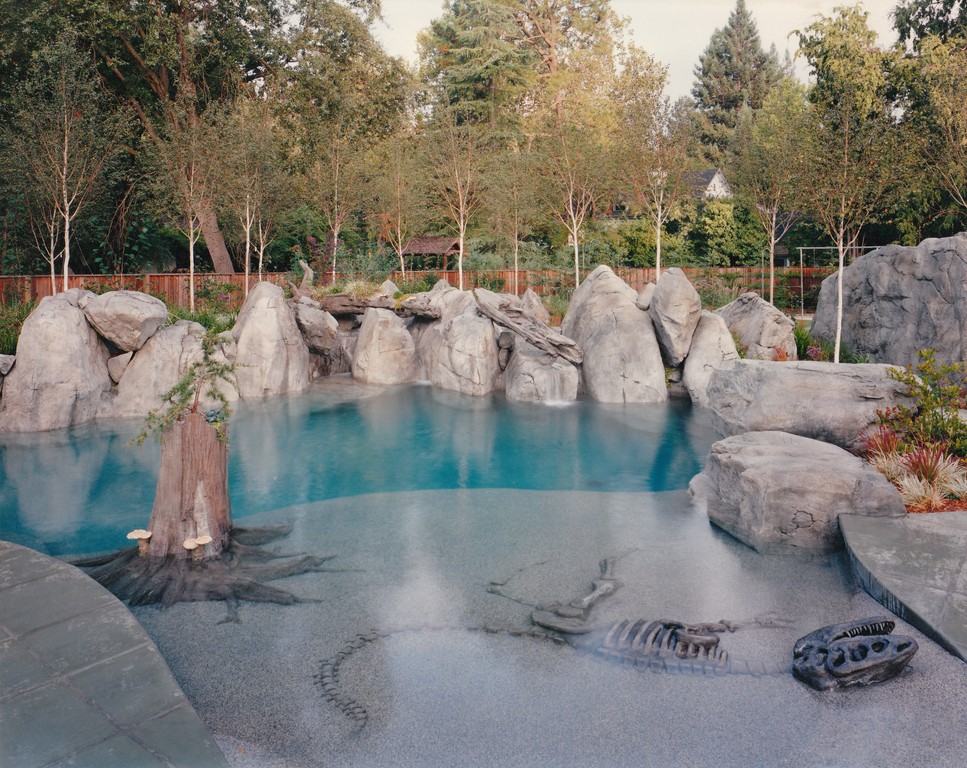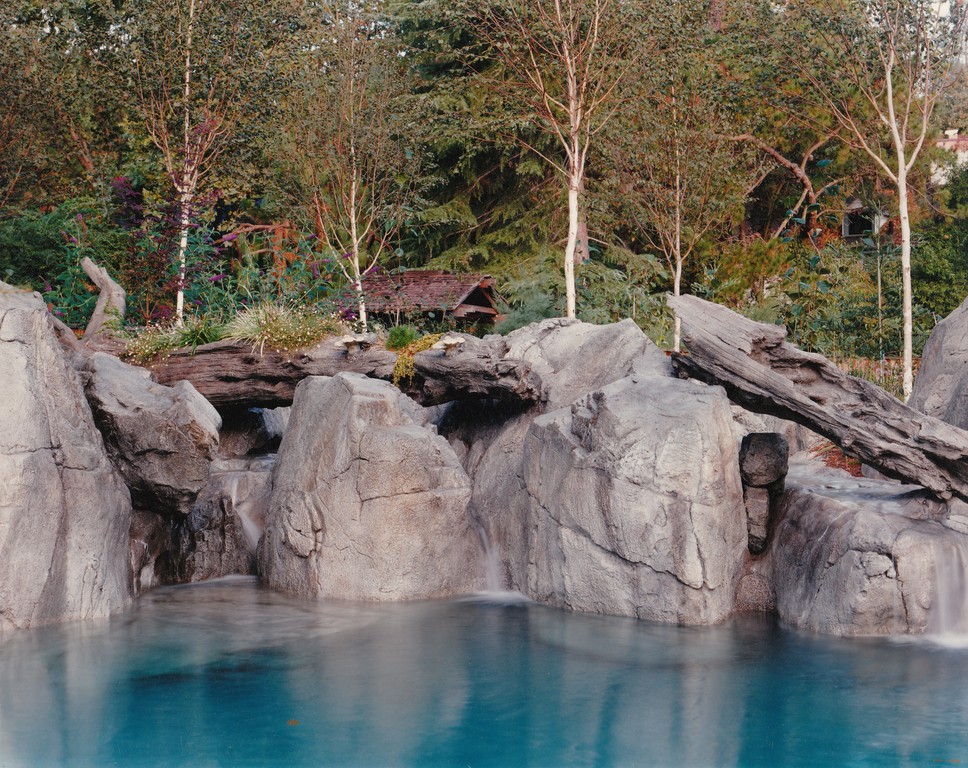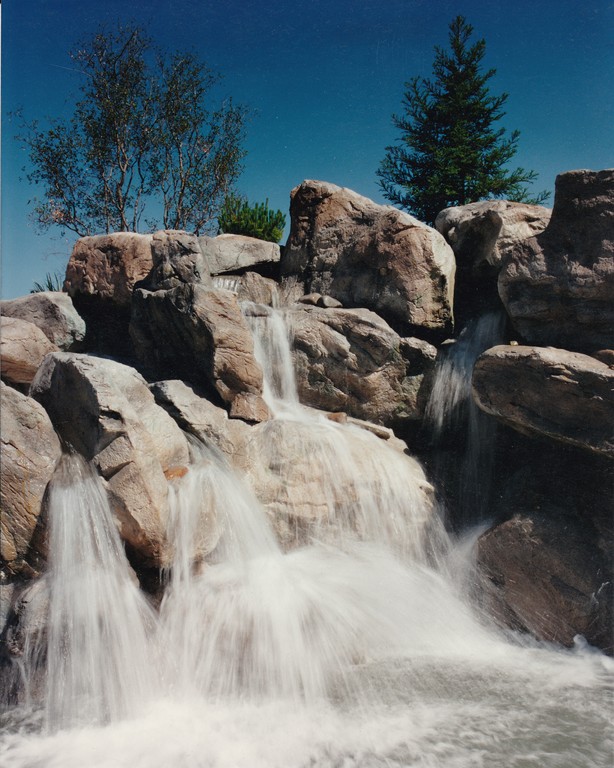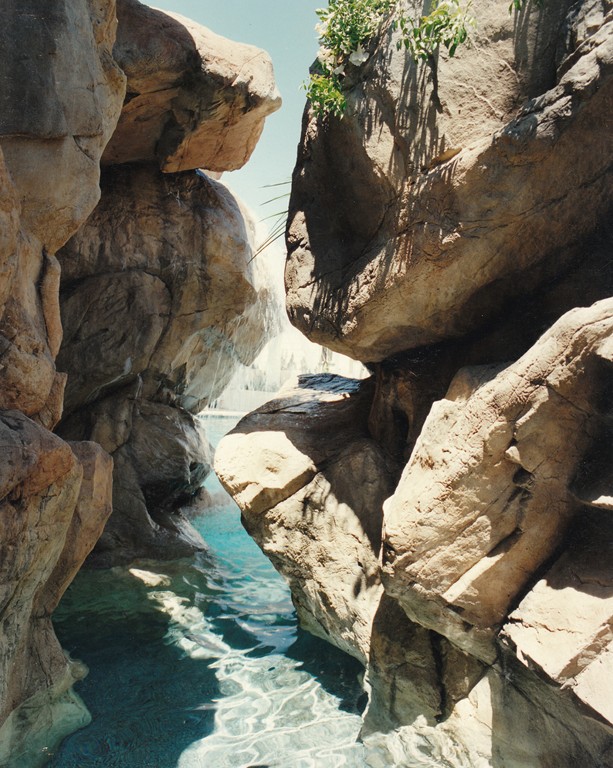Rock Talk

{Multithumb}
Artificial rockwork is hardly new. In fact, its roots stretch back more than 100 years to Germany, where it was used for the first time to enliven zoological exhibits.
Those early examples of artificial rockwork were decidedly crude – nothing more, really, than solid mounds of dumped concrete – but they met a need that couldn’t be accommodated by natural stone and made it possible to display hoofed stock (including antelopes and gazelles) on raised, natural-seeming terrains.
Those early efforts were far from beautiful, and it’s no stretch to say that things have come a long way in the century since those first attempts took shape. Indeed, those of us who’ve worked in artificial rock for any length of time are proud to have witnessed the product’s evolution to a point where materials and techniques are now applied that are capable of transforming otherwise mundane settings into scenes of striking, naturalistic beauty.
Certainly, deploying natural rockwork is another means of achieving the same end, but success often involves great expense and comes by placing considerably higher loads on supporting structures. While natural rock can be a truly wonderful material, the fact remains that it is not always the best option.
With that in mind, let’s take a look at how rock environments have changed through the years – in this article with a look at artificial rock’s history and basic applications and, in a future article, with an examination of design issues and application techniques.
MODERN ADVANTAGES
Artificial rock is a distinct beneficiary of technological advances that have taken place in the past 100 years, particularly when it comes to the use of shotcrete and other pneumatically applied mortars as well as the emergence of new finishing materials and techniques.
Using these products, technologies and techniques to their optimum extents, early faux-rock artists were able to minimize the aesthetic and practical advantages enjoyed by natural rock and, I would argue, established a market in which artificial rock could actually be superior to natural stone in many applications because skilled practitioners could do things with it that simply couldn’t be done using the real thing.
Just as is the case with pool shells, the early success of artificial rock owed much to the ability of pneumatically-placed concrete to “go vertical” with great structural integrity and, in some cases, without the necessity of rigid load-bearing forms or solid masses of material. This gave the artificial-rock designer much more freedom to create structures that were unique as well as more natural in appearance.
Through most of the formative decades of artificial rockworking, however, the underlying structures required a heavy framework of reinforced steel bars (generally from three-eighths to three-quarter inches in diameter) bent in a cross-hatch grid to mimic natural rock shapes and create a skeleton that began transforming given spaces.
Next, some material – burlap, stucco lath, masonite, cardboard or even used carpet – was suspended within the rebar armature as a backing form for the concrete. Once that backing was secured, the concrete material was shot onto the rebar to form a permanent structure – but without the cumbersome mass that would have been produced by a solid block of concrete with the same profile.
| The expressive potential of artificial rock is one of its greatest assets, as in this case, where we created a ‘Jurassic pool’ complete with faux-fossil remains and a rock structure that resembles the jagged teeth of a raptor. |
Many fabricators use this process even today, stopping at this point of expertise and simply using fillet knives to cut fractures and seismic breaks in the still-moist concrete surface and also texturing the crude concrete before coloring their work.
Such an approach may be fine for animal exhibits, where the work is seldom the subject of close scrutiny. To create realistic environments in backyards or in more-demanding commercial settings, however, faux-rock specialists learned to take advantage of a further evolutionary step by applying a second, more workable plaster surface to the rough concrete substrate. This plaster material, which has much finer sand with no rock, could be textured to a far greater level of believability.
The next step – that is, making faux rockwork that effectively cannot be distinguished from the real thing – has been pursued through the past 30 years with the advent of cast-rock technologies. Where carving techniques are superbly viable in many situations, I would argue that cast-rock systems are a last and conclusive evolutionary stage that is carrying artificial rockwork to its full potential.
A NEW CAST
In these cast-rock systems, molds are made using real rocks and formations.
Originally, the insides of these rubbery molds were slathered with thick layers of a heavy-duty cementitious material – enough to make certain the finished product would maintain its shape and structural integrity. Nowadays, however, those same molds are filled with glass-fiber-reinforced concrete (GFRC), a much lighter material that, once applied, is allowed to harden. Released from the mold, these GFRC panels are transported to construction sites where they are suspended over metal armatures.
As is true in so many creative fields, the developers of Walt Disney’s properties were pioneers in the pursuit of cast rockwork. In building Disneyland, for example, the “Imagineers” collaborated with B.F. Goodrich in developing processes for using latex to create molds of almost any object.
What Disney wanted was faster ways of making believable reproductions, and rock casting neatly filled the bill. The early techniques, however, were still fairly primitive, and the castings were often made with three inches of thickness to ensure their stability. It took some time for the process to improve, but gradually the castings became much thinner and lighter – mainly as a result of the emergence of GFRC.
| The ability to enhance existing slopes and/or mirror nearby formations without dramatically surcharging either the slope or nearby structures is another benefit that comes from working artfully with artificial rock. In many cases, these looks just wouldn’t be feasible if real rocks had to be used. |
GFRC came to light more than 30 years ago, when it was first used in commercial high-rise developments in England. As is the case with many inventions, GFRC was born of necessity: Architects desperately needed a strong but lightweight skin to cover their steel beams, and the new material provided a perfect option. It weighs just three to nine pounds per square foot (depending on thickness) and is incredibly strong, with a compressive strength of 7,000 to 9,000 pounds per square inch at a half-inch thickness.
This remarkable combination of lightness and strength resulted in a quick, broad proliferation of the material. Indeed, it’s reached a point where more than 5,000,000 square feet of GFRC are used annually in various applications – artificial rockwork prominent among them.
The GFRC material has been both a revelation and a revolution – effective because it can easily be used in the construction of large artificial boulders and cliff faces, desired because the results can be so realistic and efficient because panels can be transported to job sites with ease compared to natural stone.
Imagine working on the top floor of a high-rise office building: In most any circumstances, working with real rock would be labor intensive, difficult and costly. By contrast, GFRC rock panels can be shipped anywhere and be handled with human strength, thus eliminating the necessity of expensive and cumbersome crane rentals and myriad other challenges associated with transporting heavy materials to job locations.
CASTING REALISM
The appeal of using GFRC to generate rock castings goes well beyond convenience, cost and speed of installation: Nothing in the artificial-rock realm looks more authentic because of direct casting’s ability to generate exact copies of real rocks and formations.
One challenge for architects, homeowners, commercial clients and developers these days is that buildable space comes at a premium. This often presents those who need or desire rockwork features with relatively small working spaces – spaces in which they cannot sacrifice any authenticity or compromise the impression that the installed rockwork is actually an existing geological formation.
For its part, using natural rock can be problematic in modern housing developments, where it’s not uncommon to have just five or ten feet of space between structures – a squeeze that makes it difficult (if not impossible) to get heavy machinery in position to build natural-rock structures, let alone get the rock materials on site in the first place using anything less than high-reach cranes.
The case is altogether different with cast-rock panels. Workers only need a space large enough to fit in a technician and some GFRC castings, thus allowing designers much more freedom to create one-of-a-kind structures outdoors as well as indoors.
Rock castings also offer advantages in remodeling work. If you wanted, for example, to transform a pool area by draping rock details over the bond beam or establishing them in front of a retaining wall, real rock’s weight would make its use impractical with anything short of a complete structural makeover – and perhaps even demolition and reconstruction. With GFRC rock castings, however, the desired looks can be achieved by dowelling into existing pool shells or wall structures without dramatically surcharging them.
| If you keep your eye on the way nature does things, you can introduce spectacular, wonderfully realistic formations to your clients’ projects that would be difficult if not impossible to produce in real stone – and at a much more reasonable cost as well. |
GFRC castings also have an edge for construction in seismically sensitive areas. Securing clusters of large boulders can be a monstrous engineering challenge on a hillside lot in southern California, for instance, and would, at a minimum, involve heavy-duty structural footings.
If a client has the budget for that sort of endeavor, that’s great, but in many cases, working with natural rock in such situations will involve compromises that might even make real structures seem strangely artificial. That’s generally not the case with GFRC structures – and the same can be said of choosing between natural and faux possibilities for work in above-grade structures as well.
Another benefit of this form of artificial rock is that it can be made extremely strong: Using an engineered concrete foundation and 7,000-psi-plus GFRC rock castings with a substructure of rebar and in-filled grout will produce a structure that will outlast most building foundations.
This isn’t to say artificial rock is a perfect substitute for the real thing: Rather, it’s a product that, in situations such as those detailed above, has its advantages over real rock. When well applied, in fact, it is a fully viable alternative to natural rock and, in the hands of master craftspeople, can be finished in a way that makes it virtually indistinguishable from the real thing.
MARKS OF MASTERY
The key phrase in that last paragraph was, “when well applied.” As anyone who has spent any time looking at artificial rock knows, success in creating naturalistic impressions can be elusive, and what has happened through the years is that a number of approaches have been developed in attempts to systematize effective methods and make good results reproducible.
It all began, of course, with hand-carving, which involved cutting, texturing and coloring a pneumatically placed cementious material that had been laid atop a structurally sound substrate – a method that required speed in working before the material set and therefore a certain level of skill and artistry to master. (The subsequent use of plaster helped the situation somewhat in allowing a second process of carving, texturing and coloring with a finer material, but again, it required working at a brisk pace.)
With cast rock and GFRC panels, by contrast, the hardest work of hand-carving is done in the molding process and the material comes ready-made with realistic contours. Nonetheless, there’s much skilled work to be done in fusing panels together (where needed) and applying credible finishes and colorations.
This need for finishing skill is why we all see some really good artificial rockwork and some really awful artificial rockwork. Generally speaking, the distinction breaks down to location, intended use and budget – the same factors that drive quality in construction of projects of every type on every level. If the client is a miniature golf course, for example, few will be upset if the “natural” rockwork resembles cardboard boxes slathered in papier mâché. That same approach, however, will not fly with a high-end home.
In the latter case, the job of creating artificial rockwork cannot be left in the hands of the inexperienced. Trouble is, an inexperienced contractor might look at a photo and feel confident about duplicating a specific formation – for a grotto, say – but in truth, he or she will soon confront the overwhelming rigors of producing such a structure.
True artisans in any field are made, not born. One needs time to learn the craft fully – and then considerably more time to perfect it and figure out ways of approaching rockwork structures as whole compositions in much the same way as sculptors, painters and architects create their masterpieces.
Personally, I’ll confess to having produced some terrible rockwork as I moved along my own learning curve. As with most other crafts, however, I’ve found that practice makes perfect and facilitates the development of an artistic eye complemented by necessary skill. In my view, artificial rockwork is now at a point in its evolution where many have achieved a clear level of mastery – and many more are aspiring to earn that distinction.
Matt Wilson is the principal of Second Nature Environments, a custom watershape/exterior-design firm based in Alamo, Calif. With more than 30 years’ experience, he has designed and built unique landscapes and environments for both residential and commercial clients, including several zoological and museum exhibits. Wilson, who credits travel through more than 20 countries for much of his inspiration, has been developing his style and techniques since his teen years: He received California Certified Nurseryman’s status at 17, and after several years in that business, he started his own construction company in 1981. In 1992, he was introduced to the creative potential of artificial rock – which he sees as a sculptural form of art – and has since dedicated much of his energy using that material to create a range of environments. He is currently in the process of establishing a new firm, Bachanalias, to serve ultra-high-end clients who seek resort-like environments for their homes.










